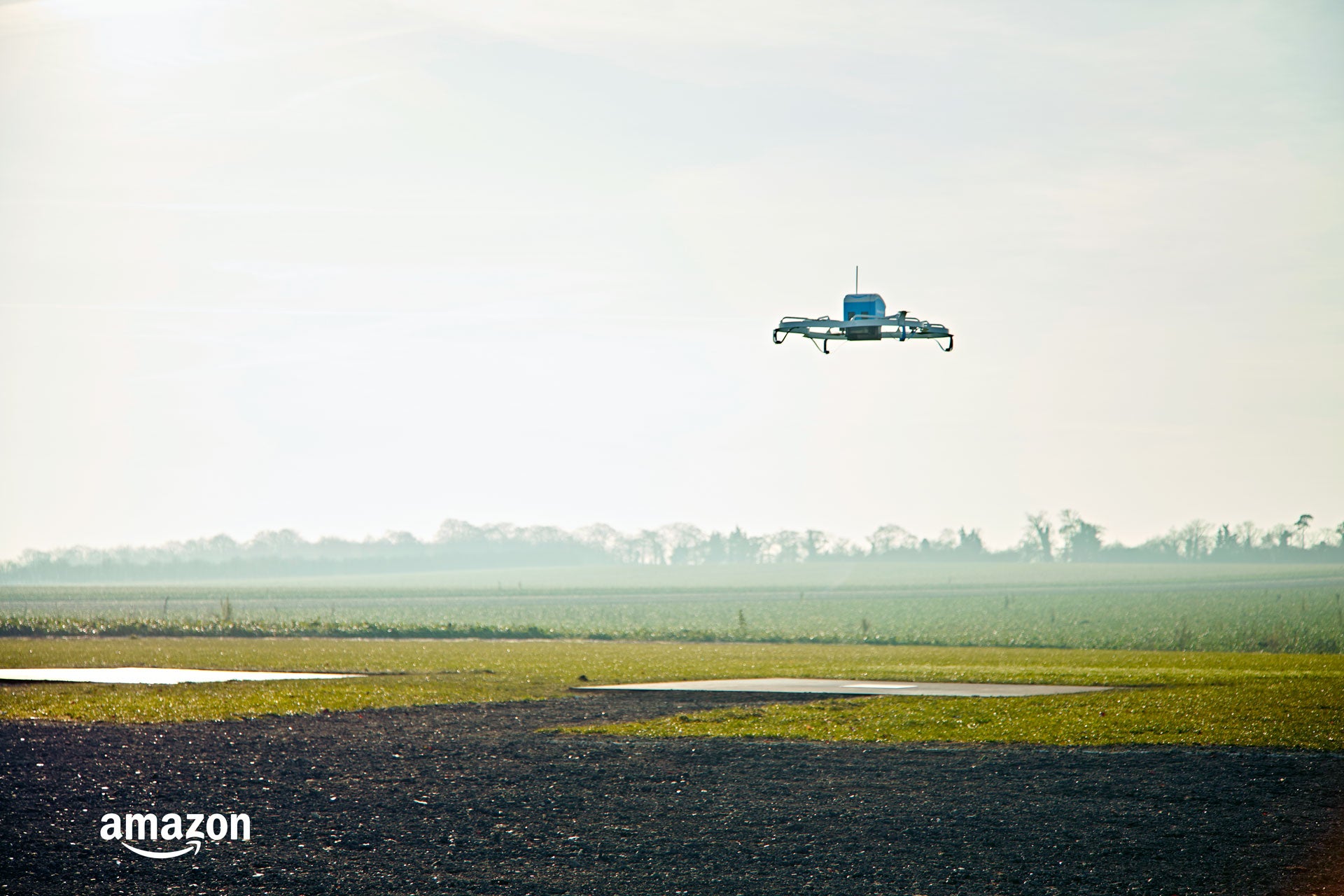The possibility of drones delivering parcels has been around for some time. Amazon pointed to such a future back in 2014. However, it is only in the last few weeks that it has become a reality. Lockeford, an area in California, has been chosen as the first location for Amazon drone delivery.
This move brings us to the threshold of a new age in the history of human interconnection. Instead of a knock on the door and a chat with the delivery person, people can expect a buzz, a thud, and, if they’re quick, a glimpse of a departing drone. After the lockdowns and isolation of the last couple of years, society might be less willing to encourage delivery methods that eliminate human contact. Indeed, those who live alone may rely on those spontaneous meetings to divide up the long days they have to themselves. Therefore, to justify removing human interaction from the delivery process, Amazon, and others following in its footsteps, must highlight the advantages that drones can bring. Technology for its own sake is not a sufficient argument for introducing them into our daily lives.
Drones can bring benefits
That said, it is undoubtedly the case that the widespread introduction of drones can bring significant benefits. For example, one Scottish council is trialling them for delivery of school lunches for pupils in remote locations. We can also cast our minds back to the last couple of years, in which drones have delivered Covid-19 tests. The ability to send a package quickly from one place to another without having to worry about any risks to the person delivering it is crucial for a world that revolves around change and development.
As such, drones have supported globalization. Previously isolated by a lack of infrastructure and harsh travel conditions, distant locations now find those obstacles (largely) overcome by airborne delivery devices. Moreover, GlobalData forecasts that the global drone market will grow at a compound annual growth rate (CAGR) of 19% between 2020 and 2030. Of course, much of that growth will come from military use. Nevertheless, the data suggests that large enterprises across many industries see drones as the future.
Environmental upsides
Alongside their speed and range of delivery, there is also benefit the environment. In contrast with gas-guzzling lorries and vans, which are presently the principal means of delivery, drones run on electricity. As such, they could well boost sustainable delivery practices. Amazon’s drones currently can only carry up to 2.2kg, which might cause a reduction in the amount of packaging used for each product.
Looking again at the environmental benefits, we should not be tricked by this news into thinking that Amazon is taking giant strides in the fight against climate change. Yes, if drones were to replace vans and lorries entirely, that would be significant. However, as things stand, Lockeford is just the location for a small-scale attempt at public delivery by drone.

US Tariffs are shifting - will you react or anticipate?
Don’t let policy changes catch you off guard. Stay proactive with real-time data and expert analysis.
By GlobalDataEven with its possible advantages, the entrance of the drone is not without its turbulence. The Independent reports that some members of the Lockeford community are not eager to see packages delivered from the sky, with a few even threatening to shoot the drones down. Of course, not everyone opposing the introduction of drones will go to such extremes, but there is resistance. Some might argue that drones flying in and around homes infringes their freedoms, others that it would disturb the tranquillity of open spaces.
However, we must also be realistic about the viability of widespread adoption of drone delivery. In cities around the world, where population density is at its highest, we cannot expect a drone to find its way to one specific flat within an entire apartment block (or at least not yet).
It is one thing to drop off a package in the garden of a house in Cornwall, but another entirely to do so on a tiny balcony in central London. And that’s even assuming companies like Amazon acquire the necessary permits for flying their drones in cities.
Despite these hindrances, GlobalData predicts that drones will be omnipresent in human activities by 2028. Why? Because drones are a quicker, more efficient, and more environmentally-friendly way of getting things done. There will inevitably be some pushback from the general public; that is a given for any change. Any logistical issues for drone delivery will be solved simply by beginning the process, for the challenges will be overcome as and when they arise.








